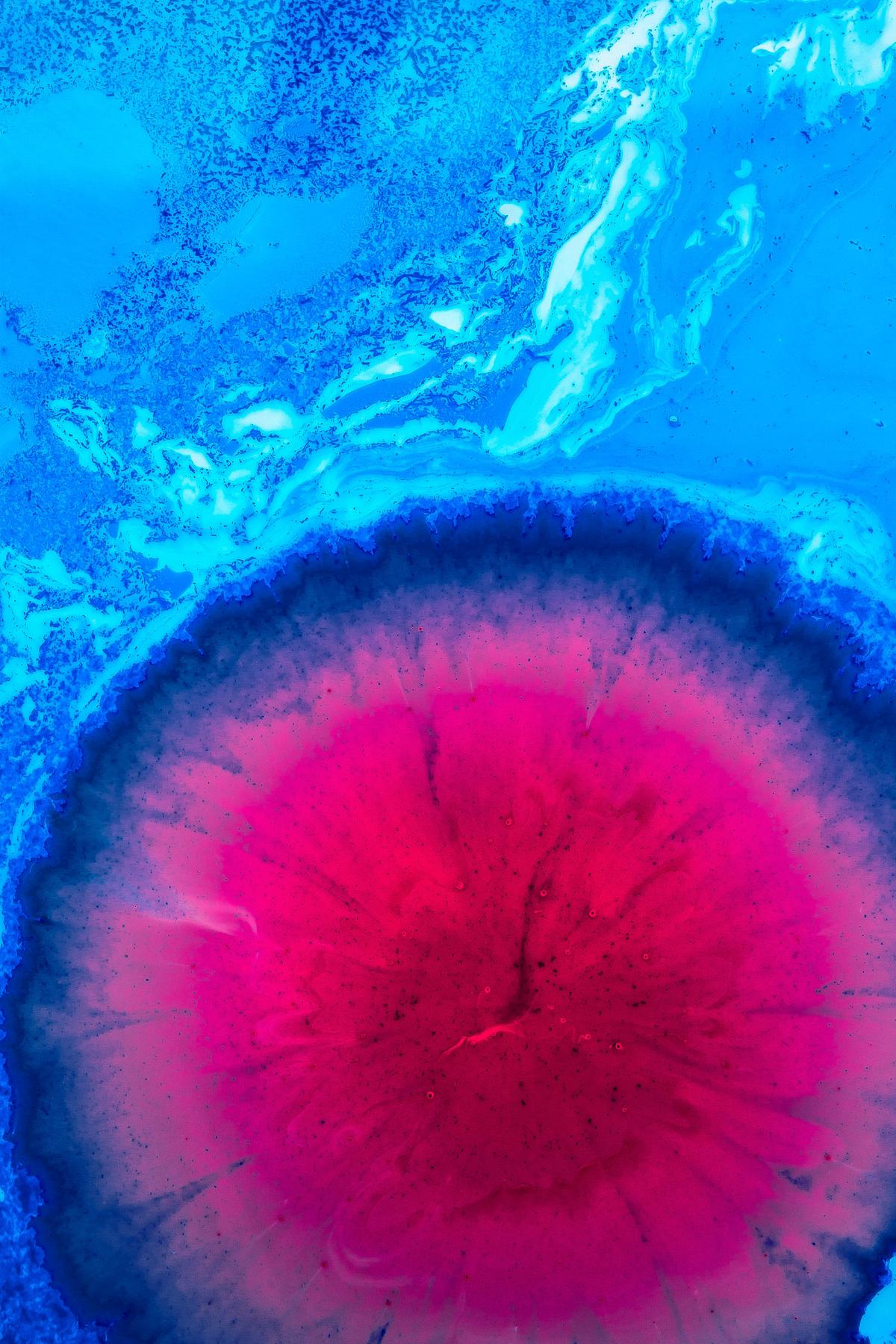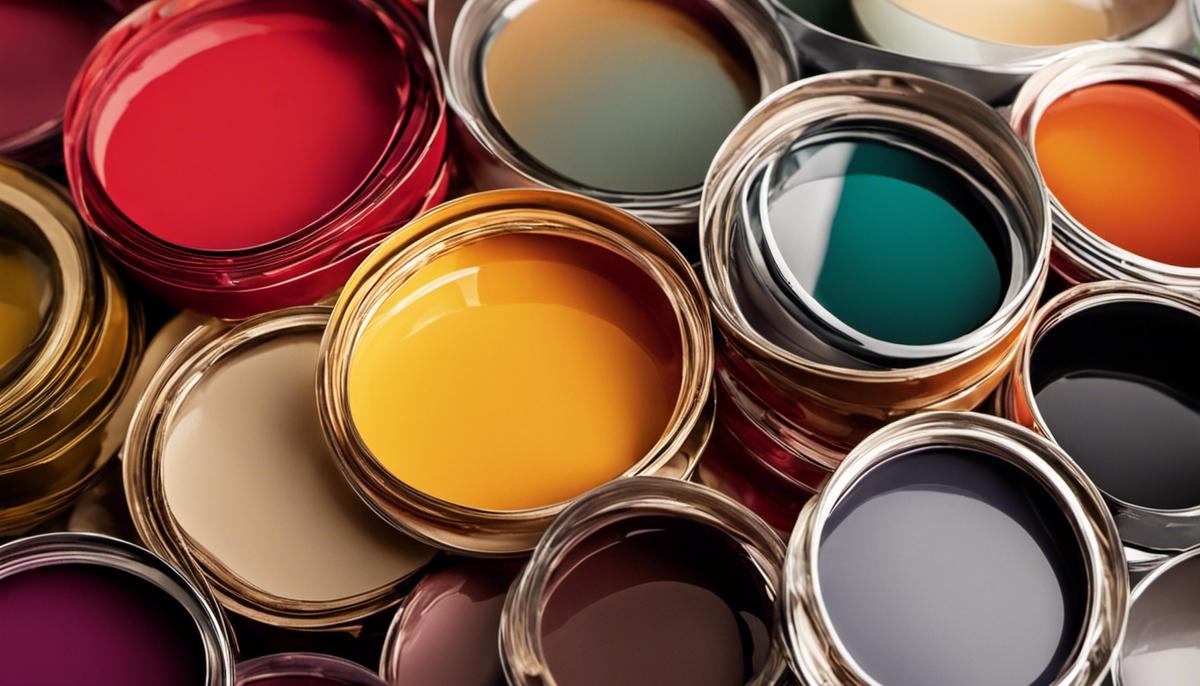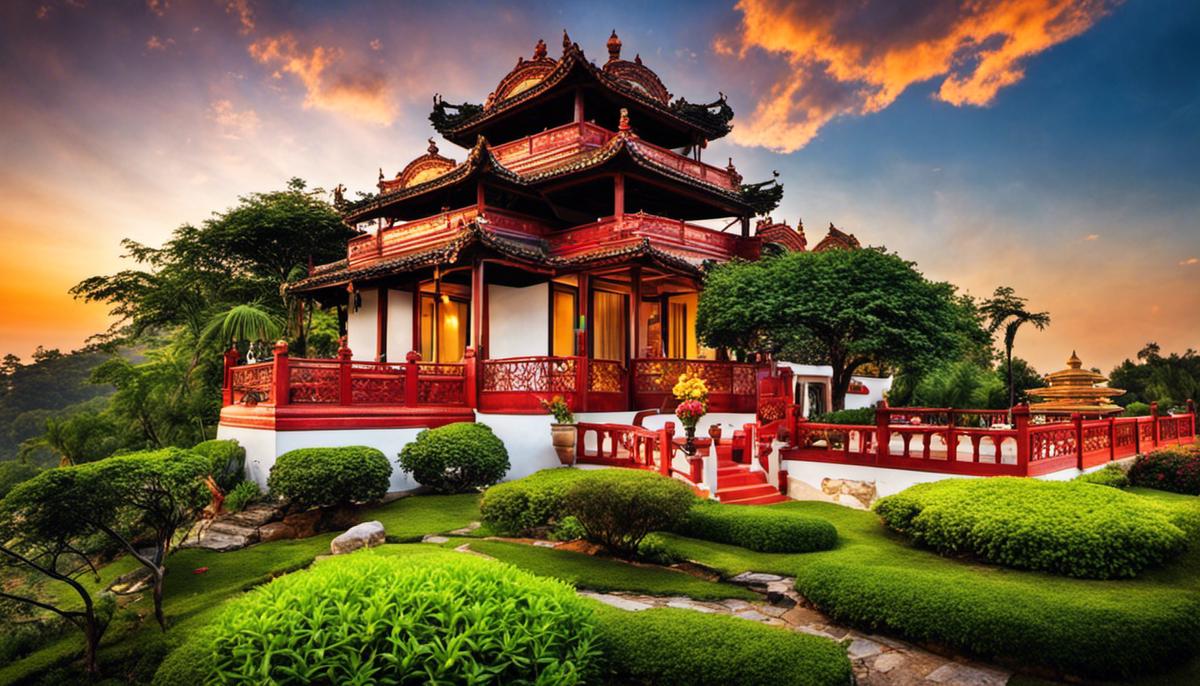Understanding What Your Favorite Color Says About You
Colors, both seen and felt, have an incredible ability to evoke emotions and shape our perceptions. They form the silent language that binds our complex world, bringing life to the inanimate and expressing what words sometimes cannot. This intriguing interplay between colors and our psyche has been explored across different cultures and fields of knowledge, leading to theories and interpretations that unravel the depth of our favorite colors.
Our journey in this discourse takes us from the fundamentals of color theory and psychology to an in-depth breakdown of common and uncommon favorite colors, crossing paths with personal style, and the ancient practices of Feng Shui and Vastu Shastra.
Color Theory and Psychology

Color Theory and Psychology: An Overview
Color theory and psychology delve into the understanding of why we perceive and interpret colors the way we do. Colors play a significant role in influencing our thoughts, moods, and behaviors. The psychology of color is rooted in cultural, personal, and universal symbolism, which varies greatly across different societies and individuals. Different colors elicit various emotions and responses, influencing the thoughts and decisions of individuals daily.
The Significance of Different Colors
Renowned psychologists and color experts, such as Carl Jung, have extensively researched the association between color and its psychological impact. For example, the color red is often associated with passion, excitement, and even danger, while blue tends to symbolize tranquility, trust, and calmness. Green typically represents nature, healing, and freshness, and yellow is seen as the color of happiness, energy, and intellect.
The Cultural, Personal and Universal Symbolism of Colors
Culturally, colors can have different meanings and values. Some cultures may interpret a color to be representative of prosperity, and another culture might see the same color and associate it with mourning. Personal symbolism of colors, on the other hand, deals with personal experiences, memory, and emotion. For example, if a person has positive memories associated with the color yellow, this color might evoke happiness or warmth for that person.
The universal symbolism of a color refers to the common emotions and responses that the majority of individuals associate with a certain color. For example, ‘red’ universally being associated with ‘stop’, and ‘green’ with ‘go’.
Understanding Favorite Color Meanings
It’s a common notion that people’s favorite colors can link to their distinct personality traits, emotions, and moods. For instance, those with a penchant for red might be characterized as outgoing and audacious, while green lovers might be seen as amiable and peace-loving. People who favor dark shades like black or navy are often associated with sophistication, authority, and stability.
However, it’s essential to recognize that the connection between one’s favorite color and personality traits isn’t absolute. Various contextual factors such as cultural background, personal experiences, and even present mood or mindset all play a part in influencing color preference. Therefore, grasping the idea of color psychology requires a dash of personalized understanding and intuition.
Detailed Discussion on Common Favorite Colors

Blue: Symbolism of Trust and Responsibility
Blue, universally crowned as the most favored color, indicates a personality that exudes trustworthiness, responsibility, and respect. Preferring this color often suggests a calm, composed character with an inclination towards peace and harmony. It’s not unusual for someone who cherishes the serene blue to be regarded as an introvert who appreciates solitude for contemplation. Also, blue is believed to signify a natural caregiver or someone with an empathetic nature due to their sensitivity towards the needs of others.
Black: The Color of Strength and Authority
The preference for the color black points towards a personality that is independent, powerful, and prestigious. Those who favor black often have a strong desire for control and power, setting high goals and standards for themselves. This color is also related to depth and mystery, indicating that black color lovers may have hidden depths, keeping parts of their personality or life private.
White: The Color of Simplicity and Purity
Those who favor white tend to value simplicity, purity, and cleanliness. They prefer to maintain a sense of order and organization in their surroundings. The preference for white indicates a personality that is optimistic and has a positive outlook towards life. White color lovers often possess an open and relaxed nature, preferring a calm and peaceful environment.
Red: The Color of Passion and Energy
Red is the color of passion, energy, and thrill-seekers. Those who love red are often extroverted and optimistic, possess an outgoing personality, and are not afraid of the limelight. They value personal freedom and are generally ambitious, competitive, and love to be the center of attention. People who prefer red tend to live life to the fullest, with a strong determination and passion.
Green: The Color of Balance and Growth
Green stands for balance, growth, and a love for nature. Those who prefer green are often practical, stable, and compassionate. They prioritize balance in their lives and tend to be clearheaded, not easily swayed by emotions. A preference for green can also point to a personality that values peace, harmony, and personal growth.
Orange: The Color of Adventure and Extraversion
Orange is associated with an energetic, vibrant personality. People with a preference for orange tend to be adventurous and outgoing. They love social gatherings, have a zest for life, and are often optimistic. Orange is also the color of creativity and indicates an expressive and artistic personality.
Pink: The Color of Understanding and Nurturing
Pink is often associated with compassion, understanding, and nurturing. Individuals who favor pink show a gentleness and femininity in their personality. They may also have a love for the arts or expressing creativity, which makes them unique. The preference for pink hints towards a romantic and sentimental nature.
Yellow: Symbolizing Optimism and Innovation
Those who favor yellow usually exhibit a sunny disposition, full of cheerfulness and diverse interests. They’re frequently innovative, consistently sparking new thoughts and plans. Moreover, yellow enthusiasts have a certain flair for inspiring others, often making a positive difference in their surroundings. Their fondness for the color yellow indicates their optimistic perspective towards life.
Photo by joelfilip on Unsplash
Favorite Colors and Relationship with Personal Style

The Fusion of Favorite Colors and Personal Aesthetics
The science of color psychology, also known as chromotherapy, suggests that an individual’s coloring preferences play a crucial role in their personal aesthetic expression and style. This link is often manifested in personal choices ranging from attire and interior decor to the color of their vehicle.
People tend to manifest their preferred colors within their clothing styles. For example, bright, warm colors such as red, yellow, and orange could reflect a bold and extroverted personality, while cooler shades such as blue, green, and purple might hint at a calmer, more introspective nature. Meanwhile, neutral colors such as black, white, or grey could denote a preference for a sophisticated and minimalist style.
Color preference extends beyond just clothing. It’s seen in personal spaces like homes and offices, which are typically decorated in people’s favorite colors. The choice of wall paint, color of furniture, and selected artwork — these all give insights into an individual’s personality and style preference.
Accentuating Personal and Professional Life with Favorite Colors
Harnessing one’s color preferences can offer both personal and professional advantages. At a personal level, surrounding oneself with favored colors can create a comforting and inviting environment, enhancing overall mood and well-being.
On a professional front, understanding one’s color preferences can help project an image that aligns with career aspirations. For instance, blues can project trust and dependability — ideal for professionals in consulting or finance. Reds can convey power and passion, which can be beneficial for those in leadership or creative roles.
Key Role of Colors in Personal Branding
One way color preferences greatly influence us is through personal branding. Utilizing favorite hues across various digital channels, like personal websites or social media accounts, creates a unique and recognizable identity. Consistent repetition of chosen color or colors in visuals, text, and design aesthetics not only boosts recognition but aids memory, building a strong personal brand.
To sum it up, our color preferences are intrinsic to our personal style. Realizing and emphasizing these color associations can offer significant benefits in all areas of life, professional and personal. By appreciating the link between personal style and favorite colors, more informed decisions can be made when it comes to clothing, interior design, and personal branding.
Favorite Colors in Feng Shui and Vastu Shastra

Colors and Feng Shui: Building a Balanced Energy
In East Asia, Feng Shui practices have been used traditionally to create harmony between individuals and their environments, using the energies associated with different colors. In Feng Shui, every color corresponds to one of the five elements: Wood, Fire, Earth, Metal, and Water. Therefore, having a favorite color means subconsciously aligning with the energy tied to that color’s respective Feng Shui element.
For example, those partial to the color green are associated with the Wood element, symbolizing growth, rejuvenation, and prosperity. This healing color promotes balance across body, mind, and spirit. Conversely, blue represents the Water element, embodied in attributes like serenity, purity, and abundance. If blue is your preferred color, reflective of water-like qualities may be evident in your character or lifestyle.
Red signifies the Fire element, upholding leadership and passion. It’s a powerful color of energy, enriching any robust, positive intentions – perfect for those seeking passion and vitality. Earth tones such as brown, yellow, and orange connect to the Earth element, denoting stability, nourishment, and grounding. Brimming with a soothing, wholesome energy, these colors can imbue your environment with a sense of warmth and comfort. For the Metal element, turn to white, gray, and metallic colors – symbolizing purity, precision, and clarity, these colors are great for enhancing focus and decision-making skills.
Vastu Shastra & Favorite Colors: Stimulating Prosperity
Much like Feng Shui, Vastu Shastra, an age-old Indian science of architecture and buildings, also stresses the significance of colors in personal spaces. Vastu believes certain colors can stimulate prosperity, peace, and wellbeing.
As per Vastu Shastra, blue is considered ideal for bedrooms as it symbolizes tranquillity and contentment. Green, being a representative of nature, symbolizes hope and healing – thus recommended for study rooms or areas where concentration is required. Yellow and orange, pertaining to spirituality and joy respectively, are considered auspicious for puja rooms. White, the color of peace, is often recommended for ceilings to invoke feelings of freedom and expansiveness.
Your favorite color, according to Vastu, could indicate your inherent desire for specific energies. For instance, if you favor yellow or orange, it may indicate a deep-rooted inclination to spirituality and joyfulness. A preference for white might signify a pursuit of peace and freedom in one’s life.
The importance of color in our personal spaces is emphasized in both Feng Shui and Vastu Shastra, with the balance and arrangement of these colors playing a crucial role. These time-honored eastern practices propose the intriguing idea that favoring particular colors may subconsciously attract certain energy forces into our lives. Thus, they may offer valuable insights into unveiling personal preferences and creating a lifestyle that is not only balanced but also prosperous.
Less Common Favorite Colors and What They Mean

Turquoise: Serene and Stimulating
The color turquoise, which gracefully merges the soothing serenity of blue with the energizing zest of green, signifies a harmonious blend of tranquility and stimulation. Those who regard turquoise as their favorite color are often seen to have a distinctive flair for artistic expression. They can effectively communicate their thoughts, as they are believed to have a clear connection between their heart and their ability to express themselves. Moreover, individuals who are drawn to turquoise are generally more creative, sensitive, and have a unique way of perceiving the world.
People who favor turquoise are also seen as being compassionate and empathetic, with a profound understanding of others that enables them to form deep, meaningful relationships. The tranquility associated with this cool color represents a calming personality and a strong desire for emotional balance and peace in life.
Lime Green: The Energetic Optimist
Lime green, a vivid and vibrant shade, represents enthusiasm and vivacity. Those who assign lime green as their favorite color are typically seen as lively, outgoing, and often spontaneous. This color is linked to an adventurous spirit, signaling a love for outdoor activities and a high level of energy. Lime green can denote a youthful personality, regardless of the person’s actual age.
Lime green is also associated with an optimistic outlook on life. Individuals favoring this color are generally cheerful, animated, and always looking at the brighter side of life. They are believed to encourage and bring about change, and their upbeat temperament can make them the life of the party.
Other Less Common Favorite Colors
Individuals who prefer less common favorite colors, like bronze or mustard, have personalities as unique as their choice of color. Bronze is often linked to a sturdy, dependable character but also a person who appreciates antiquity and vintage charm. On the other hand, a favorite color of mustard denotes a daring, bold personality that isn’t afraid to stand out or express independent thinking.
Embracing unconventional favorite colors allows individuals to better express their individuality. These unique favorites can offer insightful perspectives into complex characters, making them—and their favorite colors—all the more interesting to get to know.

From the vibrancy of red to the tranquility of blue, the serenity of white to the mystery of black, and the quirkiness of less common hues such as turquoise and lime green- our favorite colors are more than just a visual preference. They are a mirror reflecting our personality, our unique style, and even our auspicious connection with the spaces we dwell in.
So, the next time you’re drawn to a particular color, pause for a moment and appreciate what it might be whispering about you. And remember, no matter how uncommon or peculiar your favorite color might be, it’s a unique part of who you are, so embrace it with joy and wear it with pride.





